Cycling track of Santerno
Updated on 05 July 2022 From eXtraBO Outdoor Infopoint
The Santerno is the river that flows through the city of Imola, a name strongly linked to the world of motors, thanks to the Enzo and Dino Ferrari racetrack, which has enlivened the area with car and motorbike races for decades. Not everyone knows that the Imola area has a long tradition of cycling, as demonstrated by the fact that it held the World Cycling Championships in 2020 and in its creation of the Ciclovia del Santerno (Santerno Cycle Path).
Route
44 kilometres of pure scenic attraction as you cycle along the path through the municipalities of Mordano, Imola, Casalfiumanese, Borgo Tossignano, Fontanelice and Castel del Rio. A route that is part of line #12 of the Bicipolitana of the Metropolitan City of Bologna, offering incredible landscapes, crossing river environments, valuable agricultural areas, the Parco Regionale della Vena del Gesso, a candidate as UNESCO World Heritage Site, and ending amid centuries-old chestnut forests.
Cycling Track of Santerno. Ph: Luca Patuelli
Suitable for everyone
The cycle path route follows the course of the river, starting from the plains and climbing, first slightly and then increasingly steeply, up the hills and the first Imola Apennines. For this reason, in the first section the route is low difficulty and suitable for everyone: up to Fontanelice the slope is slight as far as the first fords on the river. The second part, up to Castel del Rio, includes more challenging climbs and descents and is therefore recommended for those accustomed to this type of difference in height or people riding e-bikes.
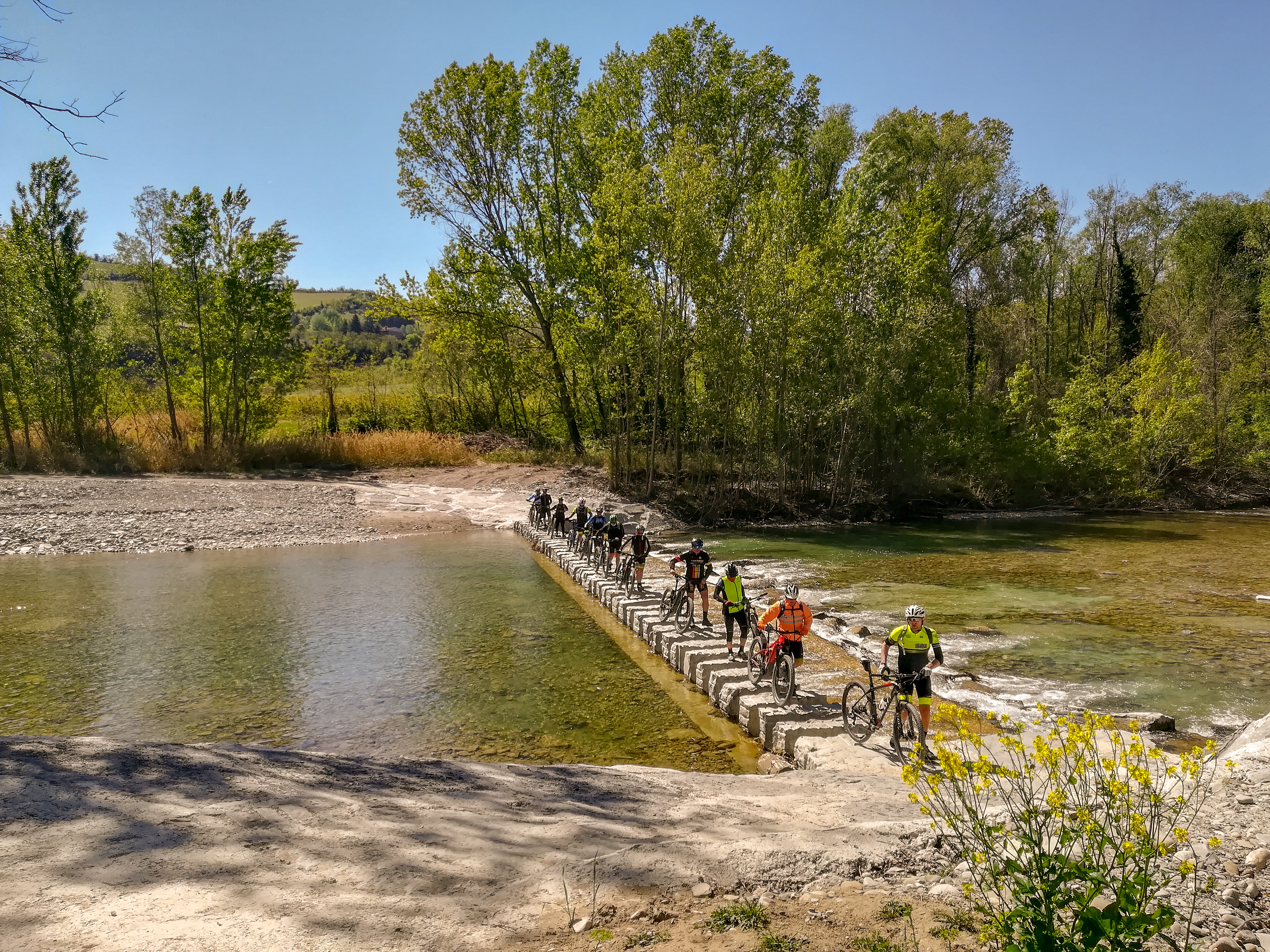
Guado Borgo Tossignano. Ph: Arianna Angeli
Nature
The main protagonist and theme of the route is the Santerno River. Following its waters, which from still become increasingly torrential as the path climbs, the land changes: from the peach and apricot orchards of Mordano, through the parks of Imola, to the rows of vines, expanses of olive groves, and chestnut forests. But the real surprise is going through the Chalk Vein Park of Romagna. Its unmistakable rocky ridge and geosites provide a remarkable backdrop to the journey.
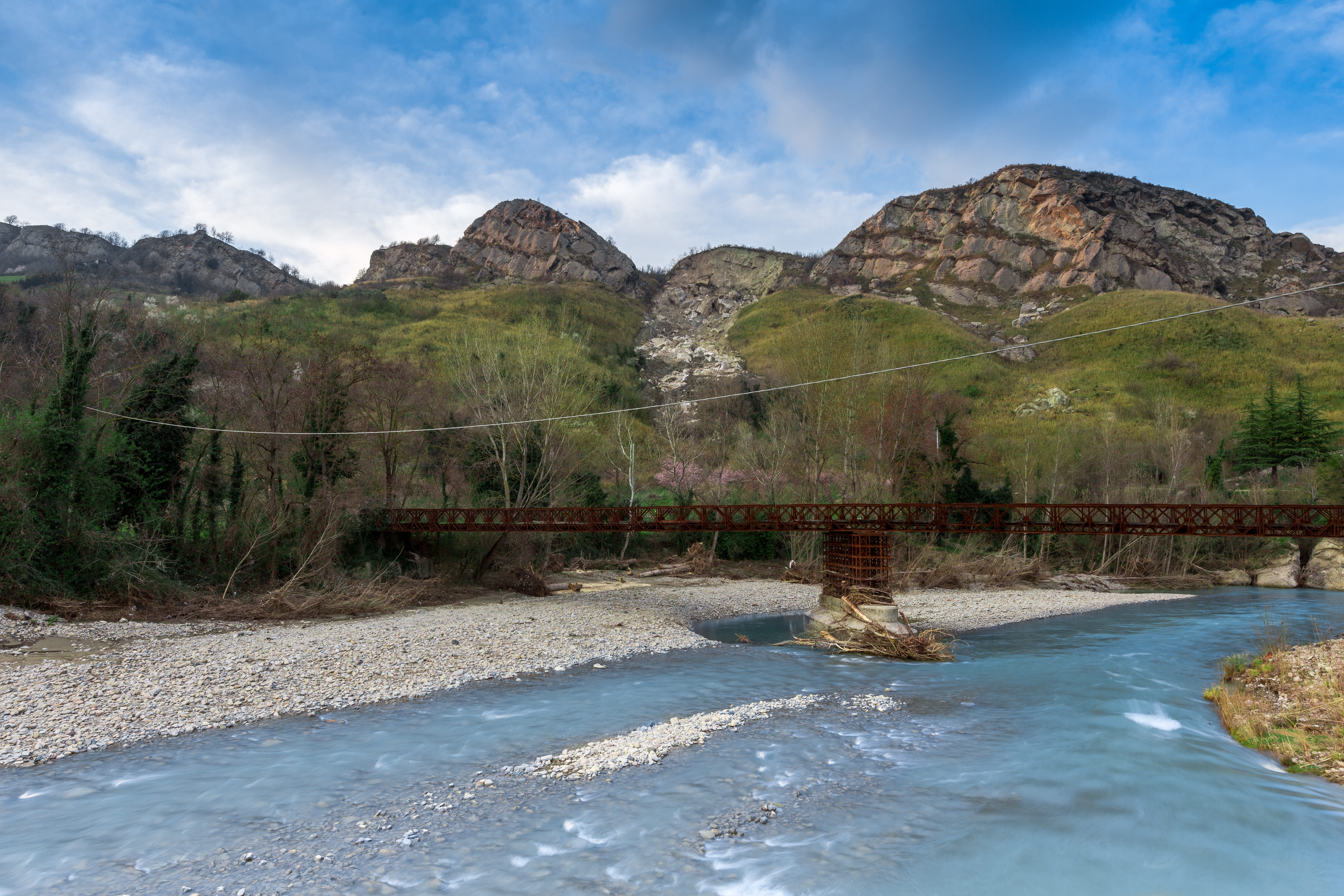
Bailey bridge. Ph: Maccarelli
Sports
Outdoor activities and sports are at the heart of the route. Whether you follow it by bike or on foot, the main characteristic of the cycle path is that it is "slow". It is precisely by exploring the area in this "slow" mode that many other trails and opportunities can be discovered: from the route of the World Cycling Championships held in Imola in 2020, to the CAI trail dedicated to the famous 19th-century botanist Luca Ghini, which passes through Casalfiumanese, the ridges of Monte Battaglia and the glass-roofed church of Valmaggiore and the Mountain Bike and hiking trails through the woods of Castel del Rio.
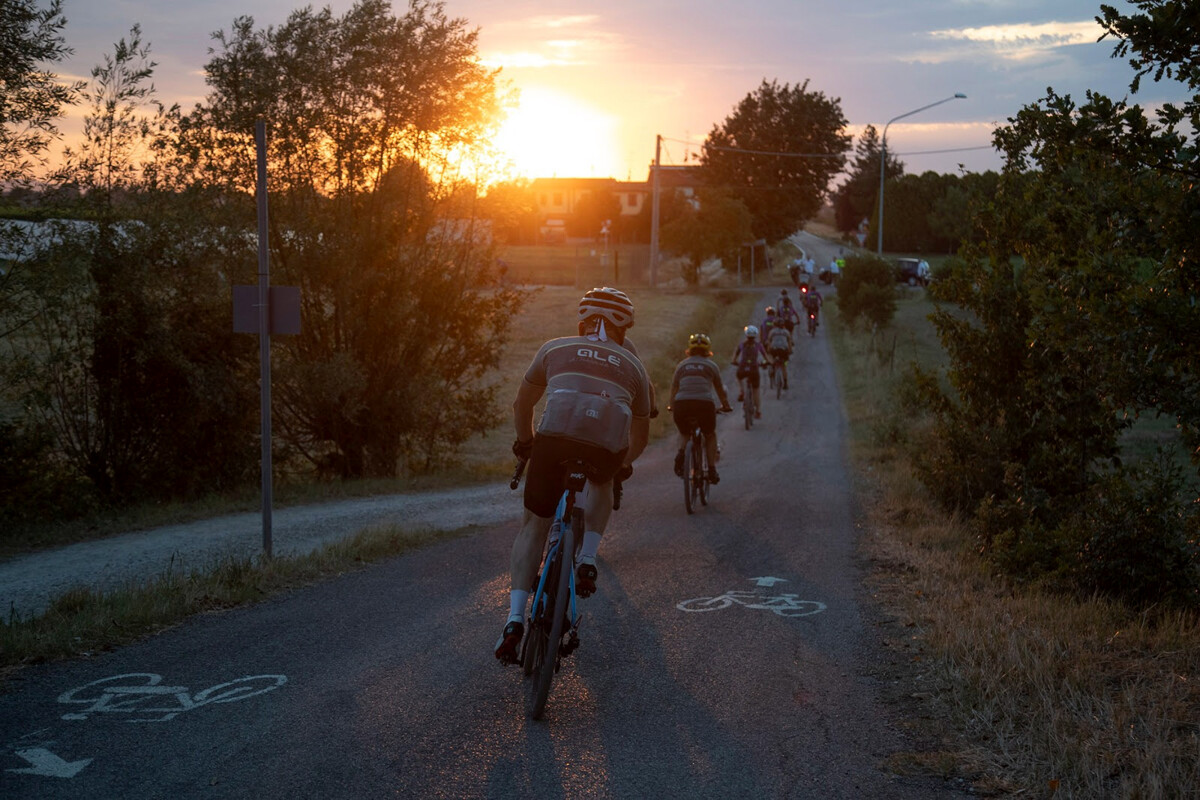
Pedalata Stelle. Ph: Isolapress
Taste
Orchards, chestnut groves, olive groves, vineyards, and the way these crops interact with the landscape, come to their best at the table and in the food and wine tradition of the Santerno Valley. The menus of local inns, farmhouses, and restaurants are strongly linked to local produce, and visitors shouldn’t miss stopping in for a taste!
The products? Scalogno di Romagna 8shallots) and Marroni di Castel del Rio IGP (chestnuts), EVO oil and red and white wines, apricots, peaches, and many more.
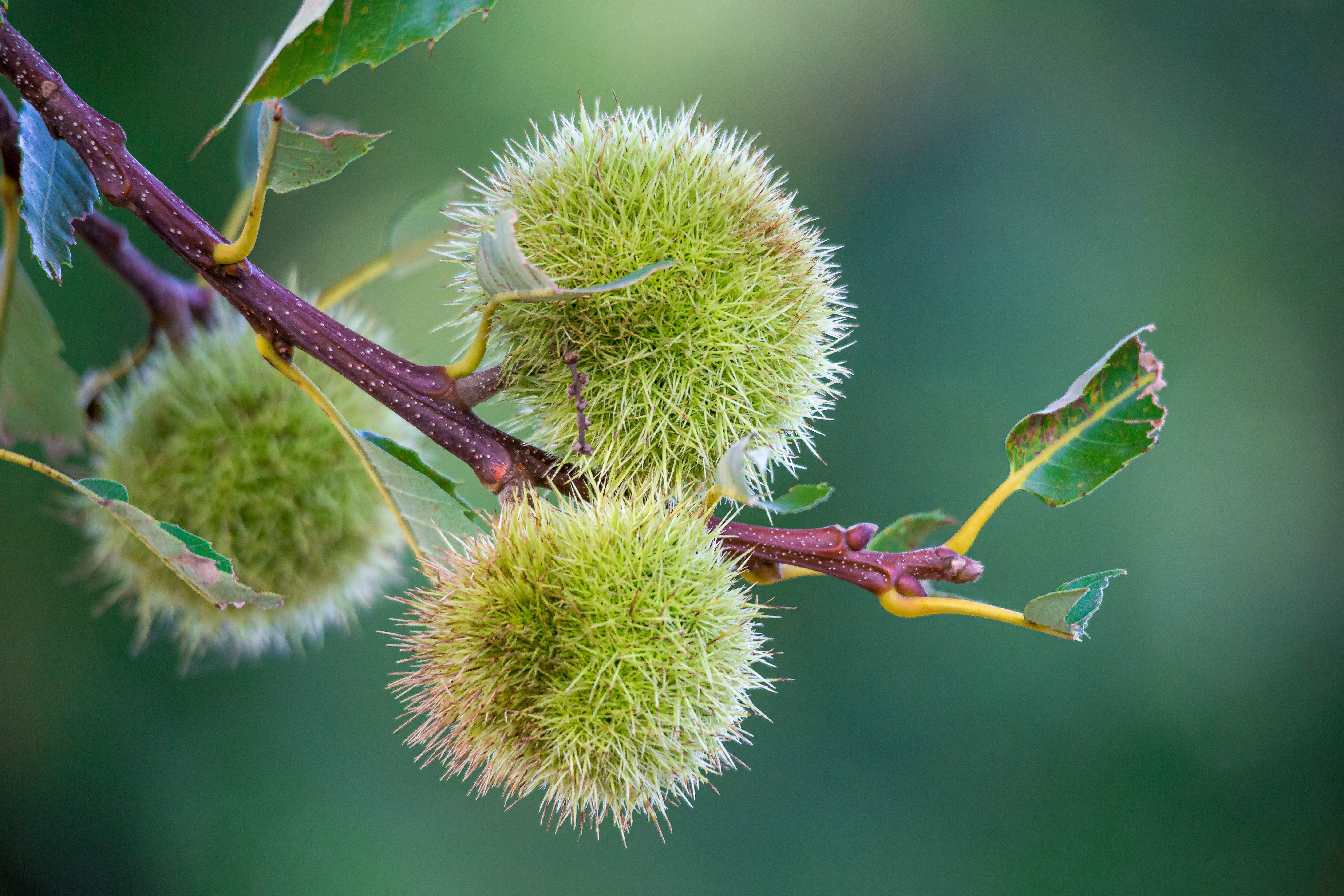
Marrone IGP. Ph: Maccarelli
Culture
Passing through the six municipalities of the Santerno Valley, visitors can explore buildings and monuments that have marked local history and culture. Starting from the Torrione di Bubano (Bubano Tower) to the Rocca Sforzesca di Imola one is immersed in the history of Caterina Sforza and her rule over the territory, Palazzo Tozzoni and the Daziaria Tower, instead, are splendid 18th-century examples of the city of Imola. In Fontanelice, the former Town Hall houses the Giuseppe Mengoni Archives, the famous architect of the Vittorio Emanuele Gallery in Milan, while in Borgo Tossignano and Castel del Rio, crossed by the Gothic Line during World War II, there is a return to more recent times with the Ponte Bailey (Bailey Bridge) and the Museo della Guerra, (War Museum) located inside the Renaissance Palazzo Alidosi. At the end of the route, the majestic Ponte Alidosi (Alidosi Bridge) crosses the river and provides a vantage point from the top of its "humpback".
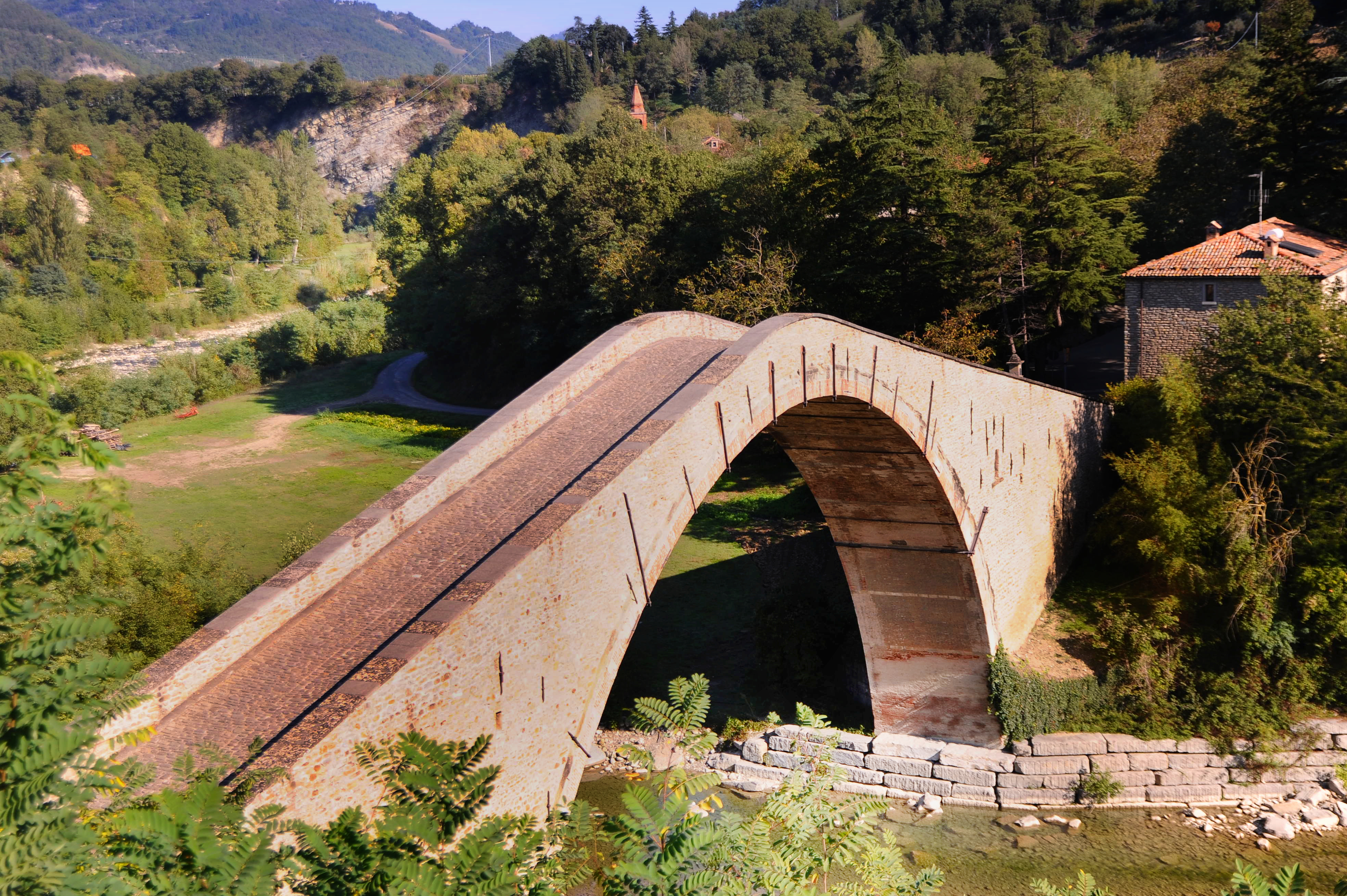
Alidosi Bridge. Ph: Arianna Angeli